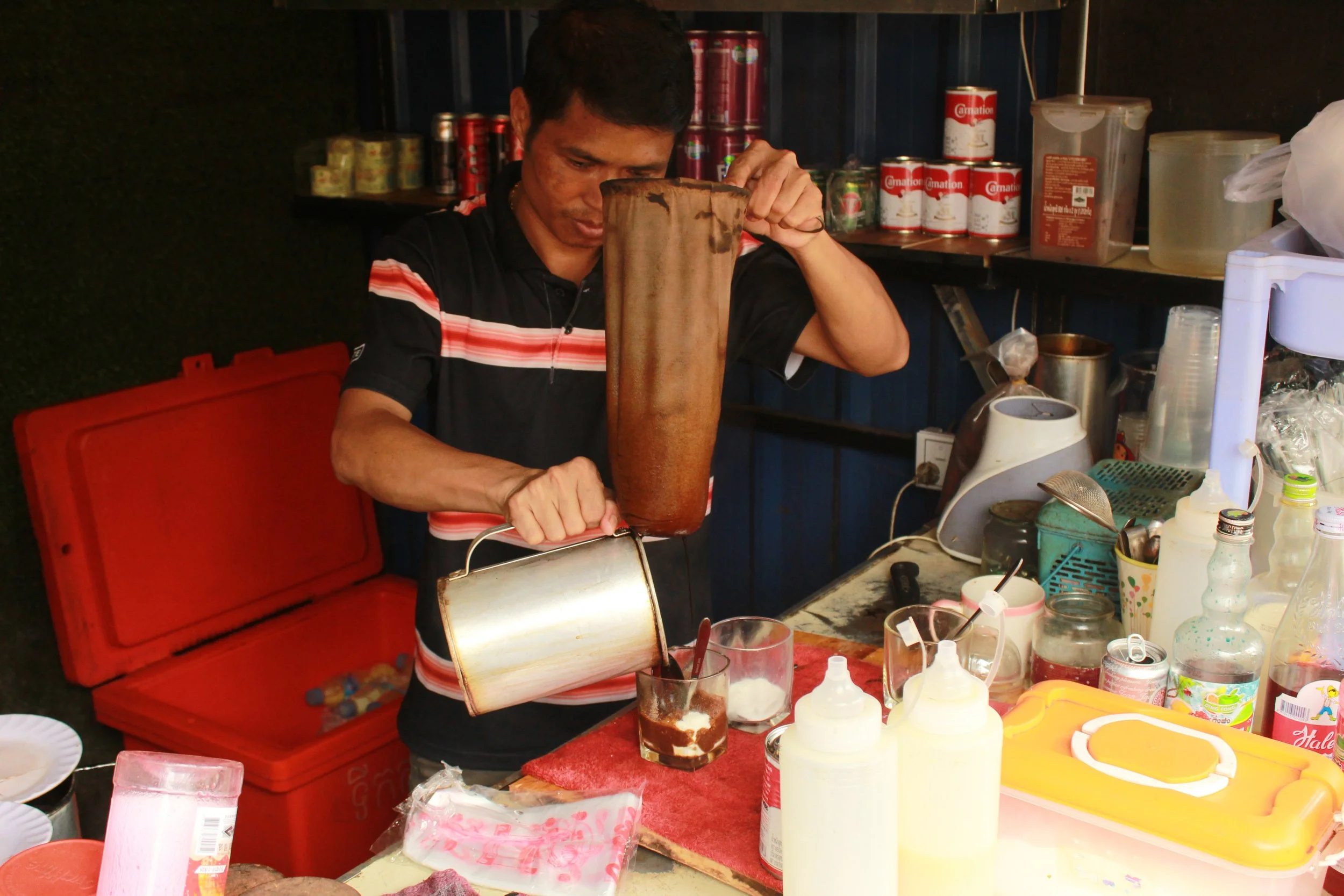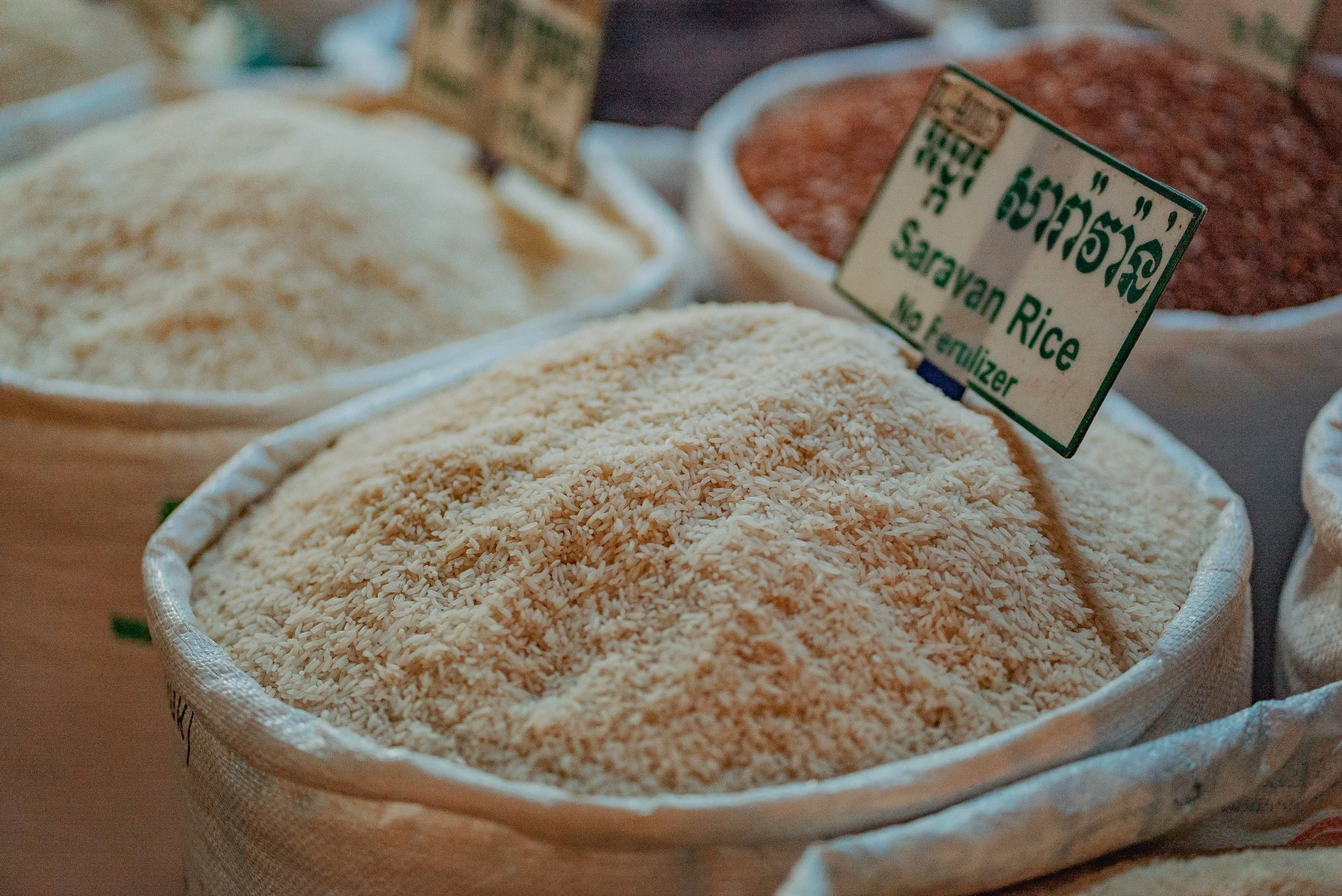My Vegan Travel Guide To Cambodia
An enchanting destination in southeastern Indochina, Cambodia shares its borders with Thailand, Laos and Vietnam.
Traditional Cambodian dishes are simple and delicious. Fresh, humble, and unassuming. For visitors, the Khmer cuisine is relatively mild, an often welcomed change from spicy Thai and Vietnamese flavours.
But what is it like for vegan or vegetarian visitors?
Travelling to this region as a vegan can be a little complicated. Several local dishes are based on meat or seafood ingredients such as chicken, pork, fish and shrimp. However, with some insider knowledge, you can avoid eating animal products and enjoy vegan dishes.
It would be impossible to cover Khmer cuisine in just one article. Here you will find the basics, and I hope it encourages you to try vegan food options.
Pub Street in Siem Reap is packed with various restaurants serving local and western cuisine
Traditional Khmer Food Culture
The term Khmer is used to describe Cambodian people and culture. A typical meal may include rice, some type of fish or seafood dish, soup, and a side of vegetables.
Cambodian food, also known as Khmer food, includes various local delicacies like fermented fish paste, crickets, silkworms, frogs, lotus root, banana flower, tamarind, kaffir lime, morning glory, bitter melon, green papaya and baby eggplant.
Traditional dishes are often based on non-vegan ingredients such as chicken stock, shrimp paste, dried shrimp, fish or oyster sauce, egg, chicken, pork etc. That is why the local menu, various street food stalls, and food markets are challenging to navigate for vegans. However, meat is also considered a luxury for most Cambodian households, enjoyed on special occasions or limited to a few times a week. Emphasis is placed on fresh and saltwater fish, seafood, chicken and seasonal vegetables.
Rice
Rice is at the centre of Khmer cooking and never goes to waste.
Once steamed, it can also be fried or made into snacks and desserts. Steamed white rice is often served with barbequed pork (bai sach chrouk) and barbequed beef skewers (sach ko and) accompanied by fresh vegetables and salad. Steam rice is also used to make fried rice (bai cha).
Rice porridge (bobor) is a popular breakfast dish often made with last night’s rice and served with a boiled egg and shredded chicken. This dish is also known as congee, a sweet, savoury or plain Chinese rice porridge in many Asian countries.
Noodles
A fresh bowl of noodle soup (nom bahn chok) served with rice noodles, and fish or noodle soup with pork or beef (kuy taev) are both local street food favourites. Noodle soup will almost always be based on chicken, pork, beef or fish stock served with vegetables, bean sprouts, garlic, and fresh lime. Noodles are also fried with just a few ingredients in the wok or served cold in a refreshing noodle salad.
Cari Saramann
A traditional Khmer spice paste called Saramann creates a delicious base for various curries. It is made with cardamom, cinnamon, cloves, lemongrass, galangal and chilli. A similar paste for a different level of spice is made with lemongrass, galangal, kaffir lime zest, turmeric, garlic and shallots.
This curry paste may also contain fermented shrimp paste or fish sauce. As an alternative, a root vegetable stock may also be used, so check before you order.
Somlor Proher
A popular vegetable soup made with lemongrass, ginger, pumpkin, taro and other vegetables from the village is a staple in Khmer cuisine. Somlor Proher is typically made with fermented fish and dried fish, but a vegan version of this recipe can be made on request using only fresh vegetables, herbs and spices.
Amok
Cambodia’s national dish is called Amok, and the recipe dates back to the Khmer Empire. It is a fragrant fish curry made by steaming white fish in banana leaves with coconut milk and various spices.
Many local restaurants now serve a vegetarian amok with tofu or vegetables.
Tropical fruit in Cambodia is fresh and seasonal so be sure to buy at the local markets
Must-Try Vegan Food In Cambodia
Nom Ga Chai (chive cakes)
Num Ansom (sticky rice cakes with mung bean or banana)
Krolan (sticky rice & red bean)
Tcheck An (grilled bananas)
Dumlowng (steamed sweet potatoes)
Amok (steamed in banana leaves)
Nom Korng (fried doughnuts in palm sugar)
Nom Heng (fried bread)
Kho Manor Nung To Hu (sweet pineapple & baked tofu)
Nyorm Kroit Tlong (pomelo salad)
Neorm Svye Kchey (green mango salad)
Somlar Kari (green vegetable curry)
Kafe (coffee)
Order a hot black coffee - the bitter flavour is perfect with fresh Nom Heng (fried sweet bread)
Tips For Ordering Vegan Street Food
Fruit shakes or smoothies may contain milk products, so it is best to ask for coconut milk or coconut water as an alternative.
Packaged food and snacks, including rice crackers, bread, chips and dried fruit, can contain seafood or dairy products.
Cooking oil used for frying may not be vegan, and peanut oil may also be used.
Vegetables may also be fried in animal oil, so worth asking if you are concerned.
Stocks and broths used for making soups and noodle dishes can be made from meat or fish-based ingredients.
Coffee and tea may contain sweet milk such as condensed or carnation milk.
Fried rice often comes with eggs mixed through the dish or served on top.
Rice is a staple ingredient in Khmer cuisine
Non-Vegan Ingredients To Look Out For
Fish sauce
Oyster sauce
Shrimp paste
Fermented fish paste
Egg
Dried shrimp
Dried fish
Milk powder
Chicken stock
Honey
Learning a few words in the Khmer language would also be helpful; try and keep these words in mind :
Oyster sauce: preng chong
Fish sauce: dteuk dt'ray
Milk: tduk dah ko
Fruit: plai cher
Chicken powder: sop knah
Vegetable: bong lai



